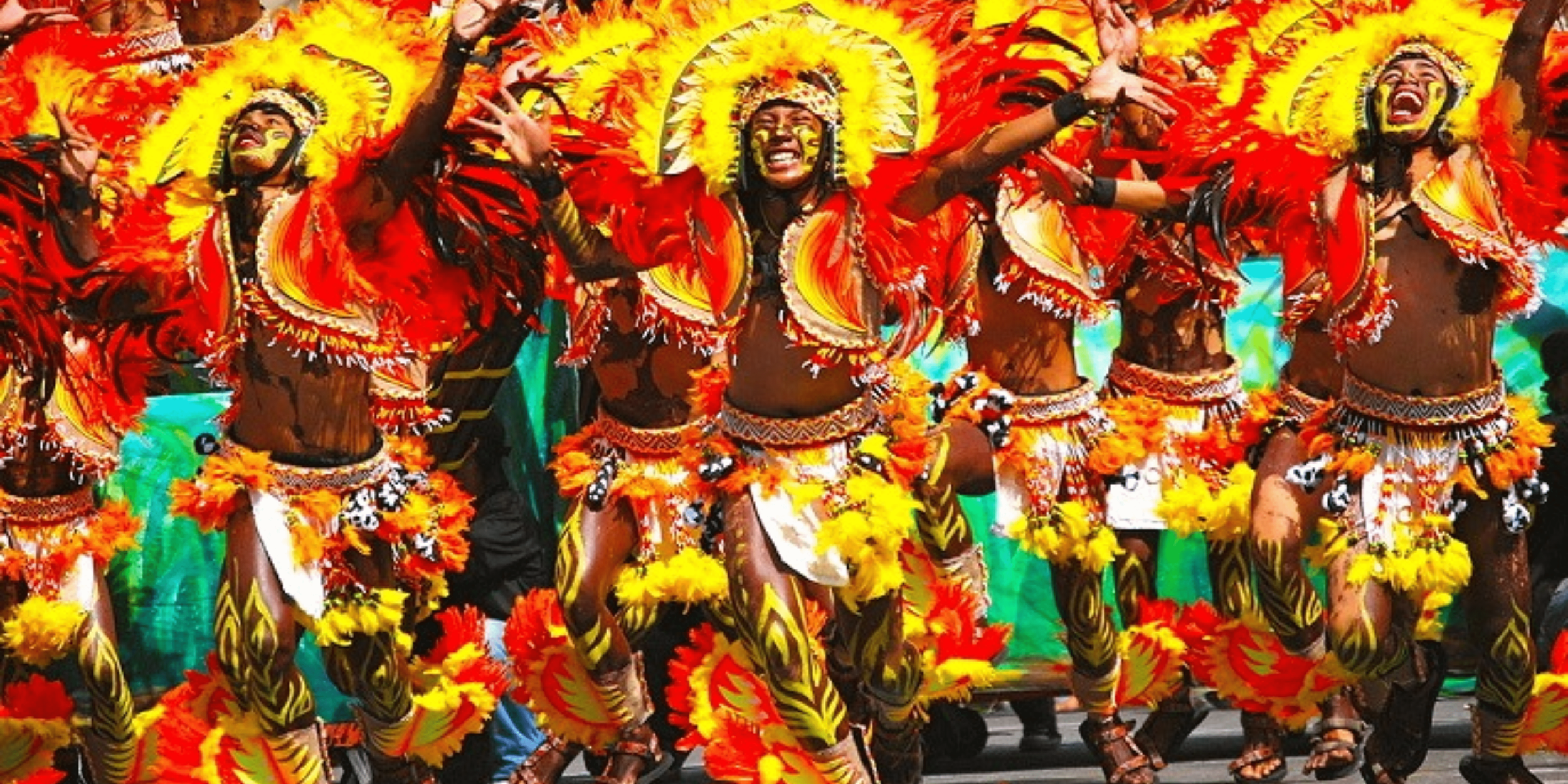Ati-Atihan Festival Feast: Aklan's Dance and Delicacies - A Carnival for Your Taste Buds
Get ready to paint your face, pound your feet, and dive into a culinary adventure like no other! Welcome to the Ati-Atihan Festival in Aklan, where vibrant costumes swirl beneath the sun, drums thrum a contagious beat, and the aroma of mouthwatering delights lingers in the air. This isn't just a festival; it's a sensory overload, a joyous clash of tradition and revelry, and a feast fit for a king (or, in this case, a very happy Ati!).



But before we dig into the dishes, let's delve into the story behind the spectacle. Ati-Atihan celebrates the Santo Niño, the Holy Child Jesus, with roots that stretch back to pre-colonial times. Legend whispers of a time when the Atis, the original inhabitants of Panay Island, welcomed Malay settlers with open arms. To commemorate this peaceful interaction, the festival erupts in a kaleidoscope of color, costumes mimicking the Atis' traditional attire, and a rhythm that pulsates through every vein.
Now, onto the heart of the matter – the food! Here are five delectable gems you must savor during Ati-Atihan:
Lechon Manok
Picture this: a golden-brown roasted chicken, crispy skin crackling under the slightest touch, infused with the fragrant trinity of lemongrass, garlic, and chilies. This isn't just any poultry; it's a centerpiece, a symbol of abundance and celebration. Fun fact: legend has it that the juiciest lechon manok guarantees a year of good luck – time to polish your chicken-carving skills!.
Kinilaw
Ah, kinilaw, the queen of Filipino ceviche. Fresh seafood swims in a tangy-salty-citrusy marinade, a touch of ginger adding a zing to the dance of flavors. It's light, refreshing, and perfect for fueling your dance marathon through the streets. Don't be surprised if locals insist on you adding a dash of coconut milk – trust their wisdom, your taste buds will thank you.
Ginataang Mais
Sweet, creamy, and oh-so-comforting, ginataang mais is a dessert that whispers of childhood nostalgia. Sticky rice meets coconut milk in a sweet embrace, sprinkled with plump, golden corn kernels. One spoonful and you'll be swaying to the Ati-Atihan rhythm, even if you don't know the steps.
Ibos
And to wash it all down, we have ibos, a refreshing concoction of sugarcane juice, ginger, and sometimes, a dash of lime. It's the perfect antidote to the spicy heat and the frenetic energy of the festival – a sugar rush for your soul.
Recipe Highlight: PANCIT MOLO
Pancit Molo
Imagine a wonton, plump and proud, bursting with pork and shrimp, bobbing in a savory broth thick with egg and vegetables. That's pancit Molo, a culinary hug in a bowl that warms you from the inside out. And here's a secret: if you offer a bowl to a friendly stranger, you might just find yourself invited to their Ati-Atihan after-party – win-win!
Let's get hands-on with a simple recipe for pancit Molo:
Ingredients:
Wonton wrappers
Ground pork
Shrimp, chopped
Green onions, chopped
Carrots, thinly julienned
Celery, thinly julienned
Garlic, minced
Ginger, minced
Eggs, beaten
Chicken broth
Water
Soy sauce
Fish sauce
Black pepper
Vegetable oil
Steps:
In a bowl, mix ground pork, shrimp, green onions, carrots, celery, garlic, ginger, and half of the beaten egg. Season with soy sauce, fish sauce, and black pepper.
Place a spoonful of the filling in the center of a wonton wrapper. Brush the edges with water and fold into a triangle. Seal tightly.
Heat oil in a large pot. Fry the wontons until golden brown.
In a separate pot, bring chicken broth and water to a boil. Season with soy sauce, fish sauce, and black pepper.
Drop the fried wontons into the broth and simmer for 5 minutes.
Thicken the broth with the remaining beaten egg.
Serve hot, garnished with green onions.
Now, grab your pancit Molo, take a sip of ibos, and let the rhythm of Ati-Atihan wash over you. This festival is more than just a celebration; it's a tapestry woven with history, faith, and the irresistible flavors of Aklan. So, come and paint your face. Together let’s say, Halabira!!





